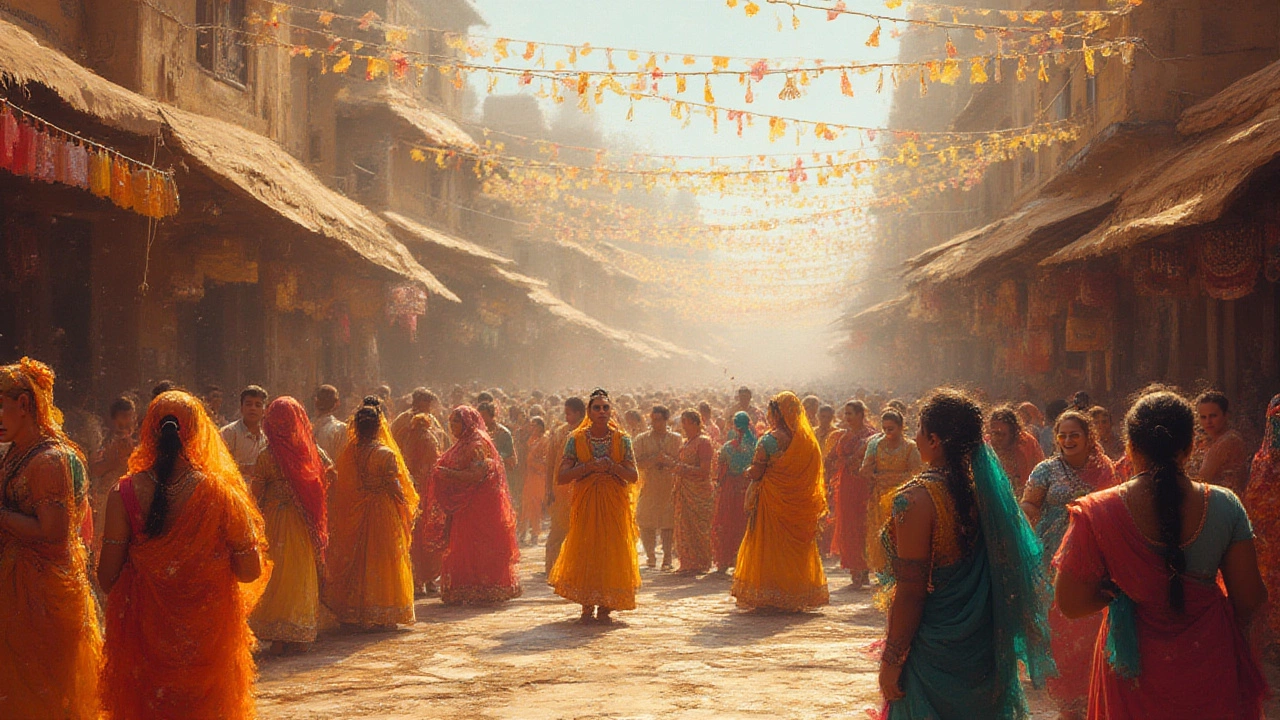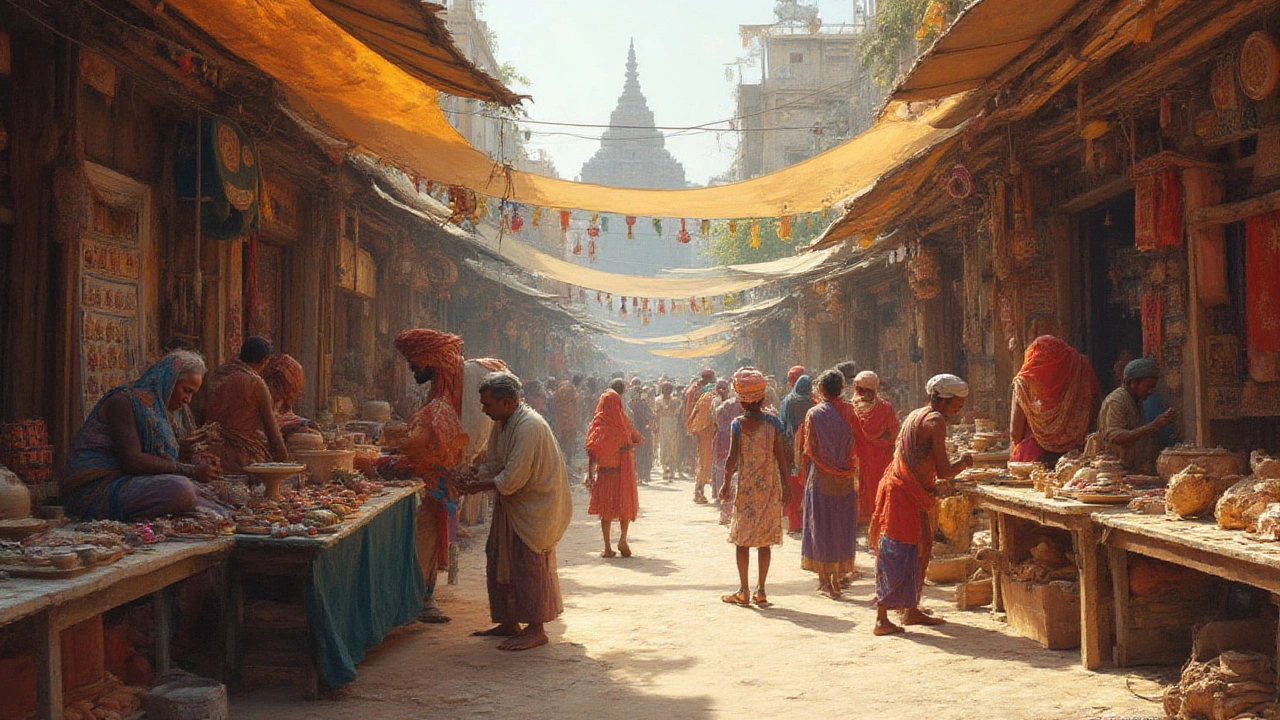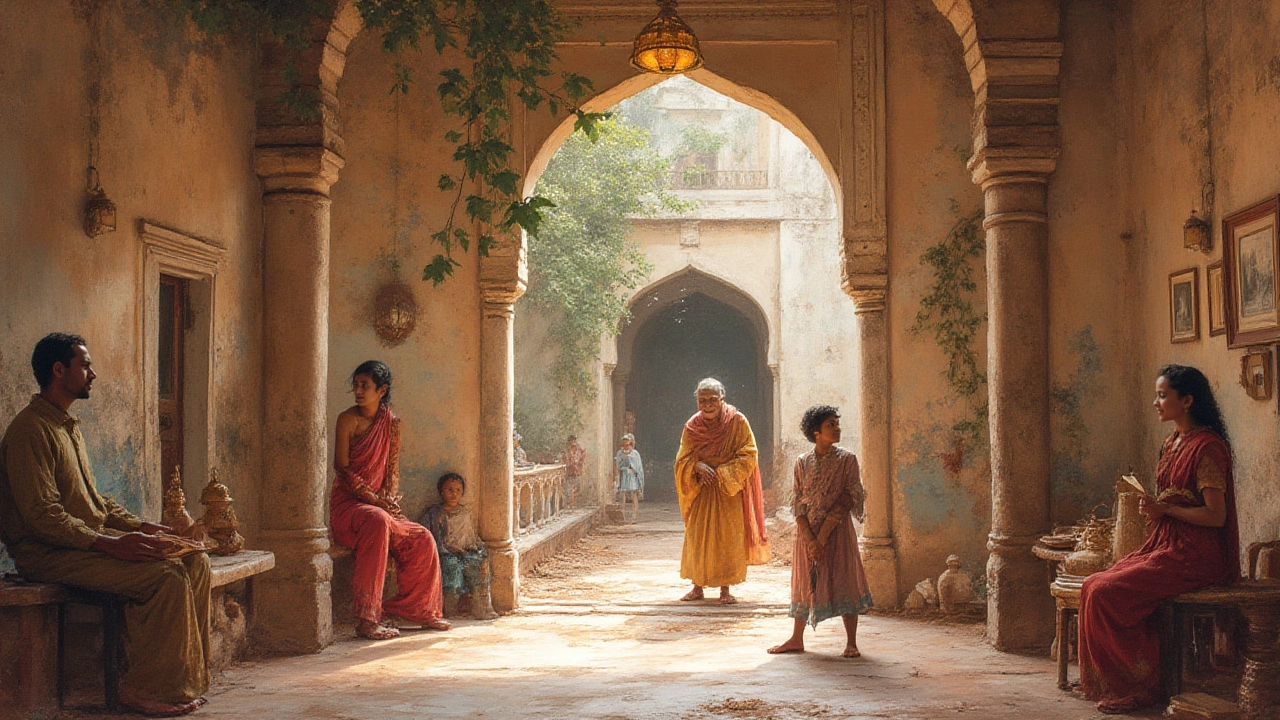India’s Cultural Heritage: Traditions, Festivals, and Timeless Art

- Jul, 5 2025
- 0 Comments
- Aaron Blackwood
Only a few places in the world mash together so many histories, sounds, colors, and tastes like India does. Sometimes when I tell friends here in Wellington about the size of India’s population—well over 1.4 billion—they don’t even believe me. But it’s not just about the numbers. What makes India so wildly different from anywhere else isn’t only the volume of people. It’s the richness of culture, layered over millennia and shaped by every possible influence you can imagine—from Persians and Greeks to Mughals and British colonizers. Culture in India isn’t just preserved in museums; it’s etched into temples, whispered in local markets, danced on festival nights, and simmered into the spices of everyday meals.
The Many Layers of Indian History
Let’s go way back—like 4,500 years back—to the Indus Valley Civilization. These folks built complex cities with well-planned drains, markets, and even what might have been early forms of yoga. Ancient texts, like the Rigveda, are among the oldest written records anywhere, laying the groundwork for beliefs and traditions still alive today. Through the centuries, India became a crossroads for traders, invaders, pilgrims, and thinkers.
The Maurya and Gupta empires saw wild growth in science, math, and philosophy. Zero? That playful, round number we take for granted—the Indians came up with that. Fast forward to the Mughal Empire, and you see the blending of Persian, Islamic, and native styles, especially in art and architecture. The British era brought tea-drinking habits, cricket, and a big shake-up in legal and educational systems. By 1947, after decades of struggle led by iconic names like Mahatma Gandhi and Jawaharlal Nehru, the country became independent. But the real kicker? Through every invasion or rule, the culture soaked up the best bits, then shared them back with a fresh twist.
Traditions Passed Down Through Generations
If you’ve ever watched a Bollywood film, you’ve seen a pretty wild mix of traditions in action—colorful saris, dramatic family stories, epic weddings, and big, collective dances. But ceremonies go deeper than Hollywood’s glitz. For instance, arranged marriages, though shifting in urban circles, still play a role for nearly half of the population, based on astrology, caste, and family ties.
Take food traditions: Indians don’t just eat—they feast. Vegetarianism, a practice dating back to Jain and Hindu teachings, is still widespread. The thali, that big metal platter with bits of everything—lentils, breads, spicy pickles—gives a flavor tour of the whole region on one plate. In fact, each area boasts its own twist: North Indians love their tandoori and breads, while South Indians go mad for dosas and fiery sambar.
India’s families tend to be huge, often stretching over three or four generations under one roof. There’s no such thing as a quick family dinner—think hours of storytelling, laughter, and more food than you thought possible. And, trust me, even the smallest event gets marked with rituals. Baby’s first haircut? Special ceremony. Buying a car? Bless it with flowers. Closing in on a century-old tradition, many urban Indians light oil lamps to banish darkness during Diwali, or throw colored powders during Holi, bringing ancient legends to street-level joy.

Festivals That Never End
Here’s a fact I tell my son Darian all the time: there’s a good chance that somewhere in India, right now, a festival is happening. Indians have an official public holiday for almost everything—and then double that with regional celebrations. Bet you didn’t know India recognizes more than 30 festivals in its national calendar.
The big three? Diwali, Holi, and Eid. Diwali, the festival of lights, symbolizes good beating evil and lights up every city and rural lane with lamps, firecrackers, and sweets. It’s basically the Indian New Year’s Eve, but with more sugar. Holi, meanwhile, is the world’s most colorful water-fight, turning entire towns into a rainbow with vibrant powders and music everywhere. Then there’s Eid, marked by fasting, prayer, and the tastiest spread of biryanis you’ll find.
You’ve also got Pongal in the South, celebrating the harvest with fresh rice and sugarcane; Navratri in the West, turning Gujarat into a giant rhythmic dance-floor; and the all-night Krishna Janmashtami, with crowds re-enacting mythic stories and smashing pots of curd. Even secular events like Republic Day and Independence Day spark epic parades and flag-hoisting. Neighbors swap festival foods—samosas, laddus, sheer korma—regardless of religion. For families like Olivia’s, even Shabbat dinner gets a new twist when the local curry house is nearby.
Art, Architecture, and Storytelling
If you love art, India’s got layers for days. Hindu temples, like those in Khajuraho, are covered in intricate carvings and storytelling panels. The Taj Mahal, that marble poem built by Shah Jahan for his wife—every inch tells a love story. The ancient Ajanta and Ellora caves, carved by hand, feature Buddhist, Jain, and Hindu images older than most modern countries. Even tiny local shrines in villages get brushed with new paint after the monsoons.
Indian art isn’t just stone and paint—music and dance styles range from the sitar-driven ragas of the North to the rhythm-bending Carnatic music in the South. Dances like Kathak, Bharatanatyam, and Kathakali are basically living storybooks, using gestures, facial expressions, and wild costumes. If you ever visit Jaipur’s block-print markets or watch artisans hand-weave silk saris in Varanasi, you’ll see that crafts remain real jobs, passed down from parents to kids.
Indian storytelling goes giant, too: the Mahabharata and Ramayana are epic tales, longer than Lord of the Rings or Game of Thrones, packed with drama, big gods, battles, and morals. They’re recited at festivals, performed as live dramas, and sometimes even shown as modern TV soaps—talk about stories standing the test of time. There’s also a thriving world of Indian films, published novels, and comic books giving old myths a flashy update.

India’s Modern Face—Old Meets New
Here’s where it gets wild. India isn’t a museum; it reinvents itself daily. My friend who grew up in Mumbai told me how she’ll text her parents in Hindi, code-switch to English at work, and cook up sushi for Friday dinner—then dive into Bollywood nights on the weekend. The IT boom has turned Bangalore into a tech capital. Young designers, musicians, and filmmakers riff off old traditions to produce streetwear, EDM, or indie movies with an unmistakably Indian flavor.
Take education: literacy rates have more than doubled since 1981, hitting 77.7% in 2023 according to the Indian Ministry of Education. Women are breaking through old social barriers, from politics to cricket fields. Yet, folk art, village fairs, and centuries-old rituals still stubbornly thrive in the countryside. Even Indian social media trends often blend ancient sayings with memes and pop culture.
Pre-COVID, India welcomed over 10 million tourists a year, drawn not just by the Taj Mahal, but by unique experiences—like Holi color runs, yoga retreats, or spicy street snacks at 2 am in Delhi alleys. These days, Indian scientists are sending satellites to Mars, while yoga—born in Vedic times—has gone global, with International Yoga Day celebrated in over 190 countries. Here’s a look at India’s impact on the world, shown in some surprising numbers:
| Aspect | Stat/Figure | Source |
|---|---|---|
| Recognized official languages | 22 | Indian Constitution |
| UNESCO World Heritage Sites | 42 sites | UNESCO, 2024 |
| Public holidays nationwide | 35+ | Indian Government, 2024 |
| Tourist arrivals (pre-pandemic year) | 10.93 million | India Ministry of Tourism, 2019 |
| Yoga practitioners worldwide | ~300 million | International Yoga Federation |
So, what holds it all together? Layers of tradition mixed with creativity and openness—India’s secret superpower. Its cultural heritage isn’t just about the past. It’s alive, noisy, and always ready to surprise you, inviting anyone willing to listen, eat, dance, and celebrate along.